
6 minute read
OFFICE DOORS
{valley changemakers}
A DAY WITH AMY SCHWABENLENDER
Executive director of Human Services Campus
As told to | Julie Coleman
6 a.m. >> INVESTING IN SELF SO OTHERS CAN BE SERVED As soon as I wake up, I check my phone to see what’s happened because things are changing so fast. Fortunately, a lot of people reach out, wanting to know how they can help, whether that’s the city, county, state, foundations or philanthropy. I told myself that in order to survive coronavirus personally and lead professionally, I needed to make sure that I was staying as healthy as possible. That means getting at least seven hours of sleep at night and starting my morning off with coffee, meditation and yoga. Sometimes these are short meditation and yoga sessions, but I find if I skip any one of these things, then I’m a little off-kilter for the day. I’ve become much more disciplined about my morning routine because I don’t want to let anyone down. I want to make sure that my employees and our partners are doing the best we can to serve everybody while employees stay healthy and safe.
8:30 a.m. >> THE CALL OF COLLABORATION There is a standing 30-minute conference call seven days a week at 8:30 a.m. between the Human Services Campus; our healthcare partner, Circle the City; our shelter partner, Central Arizona Shelter Services; and Community Bridges. These are the four most active partners on the campus right now and we are working together to coordinate services for all of our clients. I also share a recap of the call with Maricopa County because the Human Services Department and Public Health have been right alongside us the whole way, and it’s a way for me to communicate to them where we’re at.
Our Human Services Campus staff operates a welcome center and greeter station, which is a single point of entry to the campus. My team sees everyone initially, whether they’re returning or new clients. With Circle the City’s healthcare experience, we quickly implemented a COVID-19 health assessment at the entry point that includes questions about COVID-19 and taking everyone’s
temperature. If a client answers “yes” or has a temperature over 100.4, they are directed to Circle the City for further healthcare assessment.
When our calls began, none of this was in place and we spent time discussing how we were going to do this. Often, a group will work offline to come up with a workflow and then we review it and answer questions during the next morning’s call. We’ve been iterative, flexible, adaptable. For example, we created more distance between shelter beds. We now also triage to identify high-, medium- and low-risk people so we can save the most lives.
9:30 a.m. >> DURING THE UNEXPECTED, ADAPTABILITY IS THE NORM Our Lodestar Day Resource Center Dayroom typically connects clients to information and provides bottled water, phone chargers, ankle bracelets, chargers for electric scooters, and bathrooms, along with other programs. It was transitioned to shelter 47 of the most vulnerable people. During our morning call, we looked at how many total staff we have, what are the new jobs that need to be done, and how we schedule staff to rotate through positions they weren’t hired to do. We also talked about how we convince 47 people to move from one place to another. There is a lot of anxiety about what’s going on as our clients have varying access to information and news, and some didn’t know there was a coronavirus.
1 p.m. >> BUSINESS … AS USUAL There are a lot fewer meetings right now. I know in the future I’ll think back and wonder what I was doing with my time and whether all these meetings are needed. Some of our standing meetings still happen virtually or via phone, whether it’s weekly check-ins with my direct reports, working with my board president to prepare for upcoming board and finance meetings, or meetings focused on the continuum of care for the homeless. I continue to reply to philanthropy requests, complete regular grant reporting and apply for new grants. Currently, everything is virtual, which is
Above: The first Awareness Walk to End Homelessness last year was a success. This year’s had to become a virtual walk. Right: On the street outside the Human Services Campus.

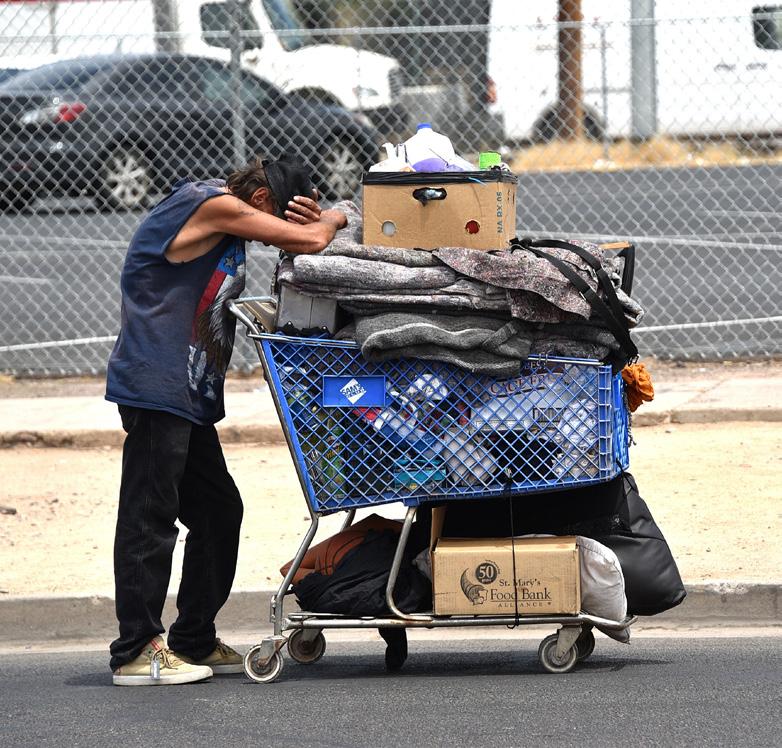
great. However, it’s a bit isolating from our normal way of operating because we’re very much about collaboration, brainstorming and drawing on walls to figure out bigger systems change. Right now, it’s all quick decisions, sharing information, asking someone for something, or updating them so they will continue to support us. I have decision-making fatigue because everything is dynamic, quick and unplanned.
3 p.m. >> QUESTIONS THAT GUIDE PREPARATION As a person who likes to plan and have deadlines, the most anxiety-producing thing is not knowing when. When is this over? What does “over” mean? There’s a lot of conversation anticipating what happens, assuming clients will test positive for coronavirus. What happens then? Do we know?
Above left: Volunteers participate in a twice-weekly street cleanup. Above right: The exterior of Central Arizona Shelter Services.
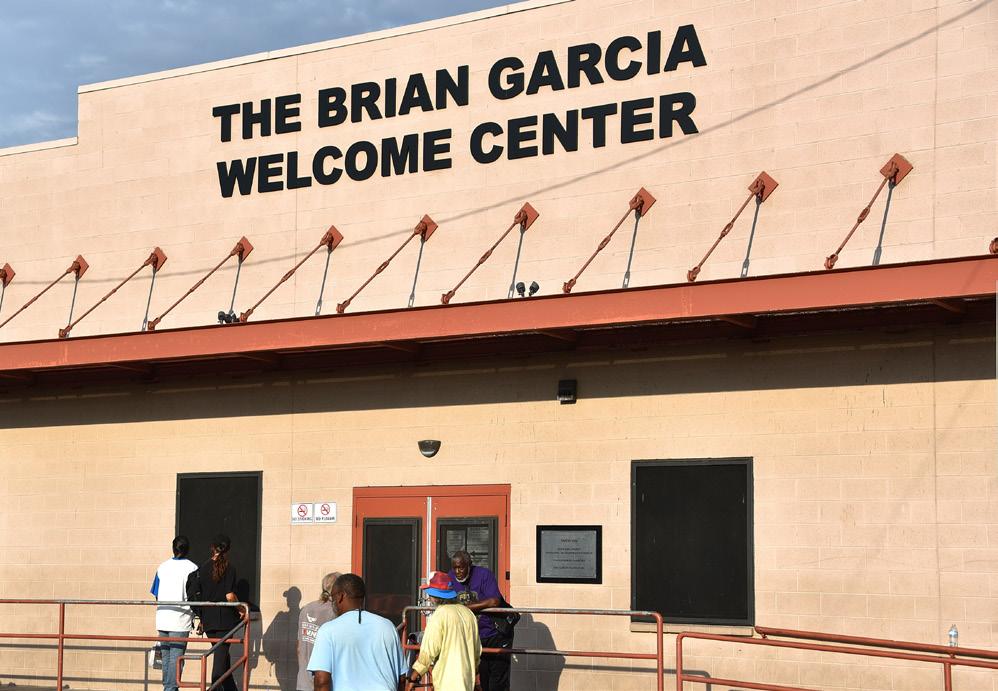
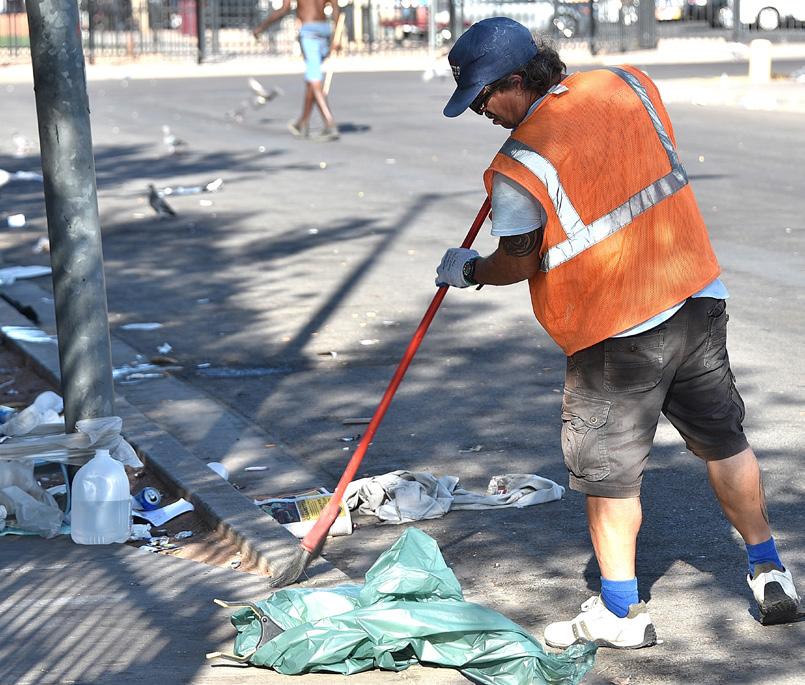
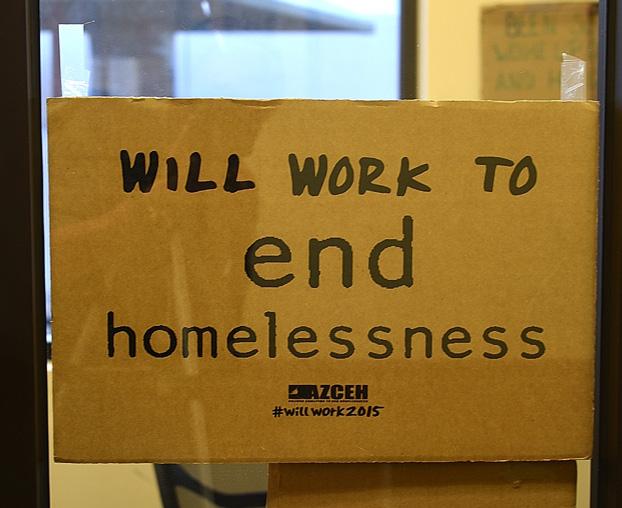
What do we need to do differently when that happens? As of now, we don’t have any clients or employees who have tested positive. But we’re building intervention strategies to be ready because I think it would be surprising to everyone if we got through this with no one testing positive.
If coronavirus gets through the housed population, is there a lagging wave in the unhoused population? Will it be a situation where the community is back to work, and the rest of the world decides this is over, but we’re still dealing with it in a pandemic way? I don’t think we’ll be lucky enough to escape it.
6 p.m. >> A HUMAN-CENTRIC LEADER’S APPROACH When I leave the office, I walk through where we’re sheltering people to make sure that everything’s going as smoothly as possible. Chatting with clients keeps me grounded and in the perspective of what they are going through. My walk at the end of the day can take half an hour, but I enjoy it and feel like I’m more informed about what’s happening.
7 p.m. >> PERMANENT CHANGE ON THE HORIZON When I go home, I check my step count and walk if needed to get my steps in for the day. After dinner, I look at emails and work on preparing for the next day, including sending the agenda for the 8:30 phone call the following morning. I
then unwind by reading something that is not work-related and scrolling through Facebook.
I think there will be systems change that is more client-centered that comes from this crisis. One of my priorities is to have a system and services that meet people where they’re at. There’s less mission creep and more sharing as we talk about our clients in a very intentional way. So, I do believe some of that change will carry over afterward, which will make the original purpose and mission of the campus truer. Because out of crisis, we’re forced to work differently.
To learn more, go to hsc-az.org.
Julie Coleman CONTRIBUTING WRITER
juliecolemanconsulting@gmail.com

CONNECTING WOMEN WHERE THEY WORK, LIVE OR PLAY
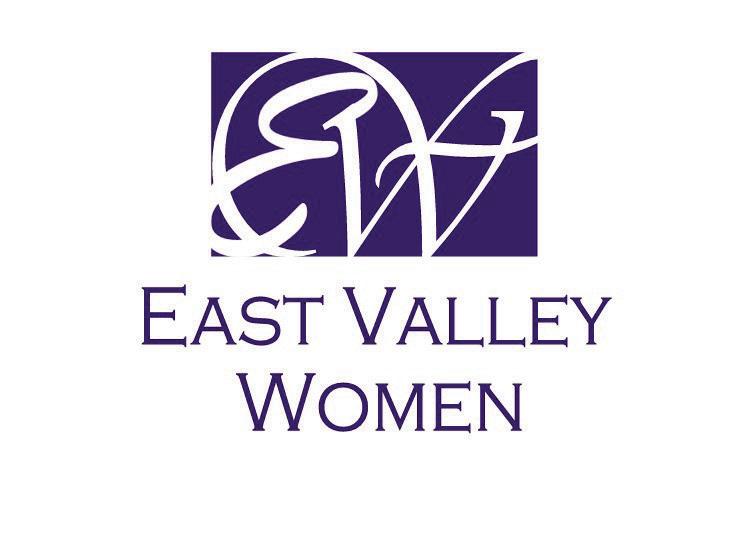
Join us where you live, work or play to connect with like-minded women to share information, ideas, contacts and opportunities.
Learn more at:










